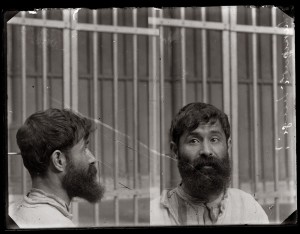Long after his death, forensic photographer Luigi Tomellini has become an ‘artist’. Producer Stefano Amoretti and photographer Mino Tristovskij have put him in a book and a show.
This could not have happened had not his analogue photography lost its value as evidence gathering. The very obsolescence of the medium gives these documents a certain poetry.
No one could question the purpose of his vision, of the vision of a hardworking forensic snapper. Tomellini’s work has put criminals behind bars and served justice to the victims of crime. One hopes.
If poets are still the unacknowledged legislators of the world (unlikely), police photographers, CCTV directors and (at times) courtroom artists are the acknowledged prosecution.
But none of the prints in the show will make it to the situation room or the courthouse. It is Amoretti and Tristovskij who have latterly developed his vast collection of negatives.
Nearly 30 years ago, these negs were found in a rubbish bin in Genoa. But one man’s trash is often another man’s meat (especially if the other party in question are artistically inclined).
The duo behind Clue: Cold developed Tomellini’s output using a traditional emulsion technique, implicating themselves in the investigation of early 20th century crimes.
By way of an important footnote, the forces or law and order were using photography only a few years after the technique was invented. This began as far back as the 1840s.
One remembers that photography perhaps only has a minor history as an artform. Aesthetics comes in second to pragmatics. But this show turns that worldly fact of life on its head.
Clue: Cold can be seen at Gallery 71a, London, on 24 March 2016, before travelling to Treviso and Genoa in Italy.
